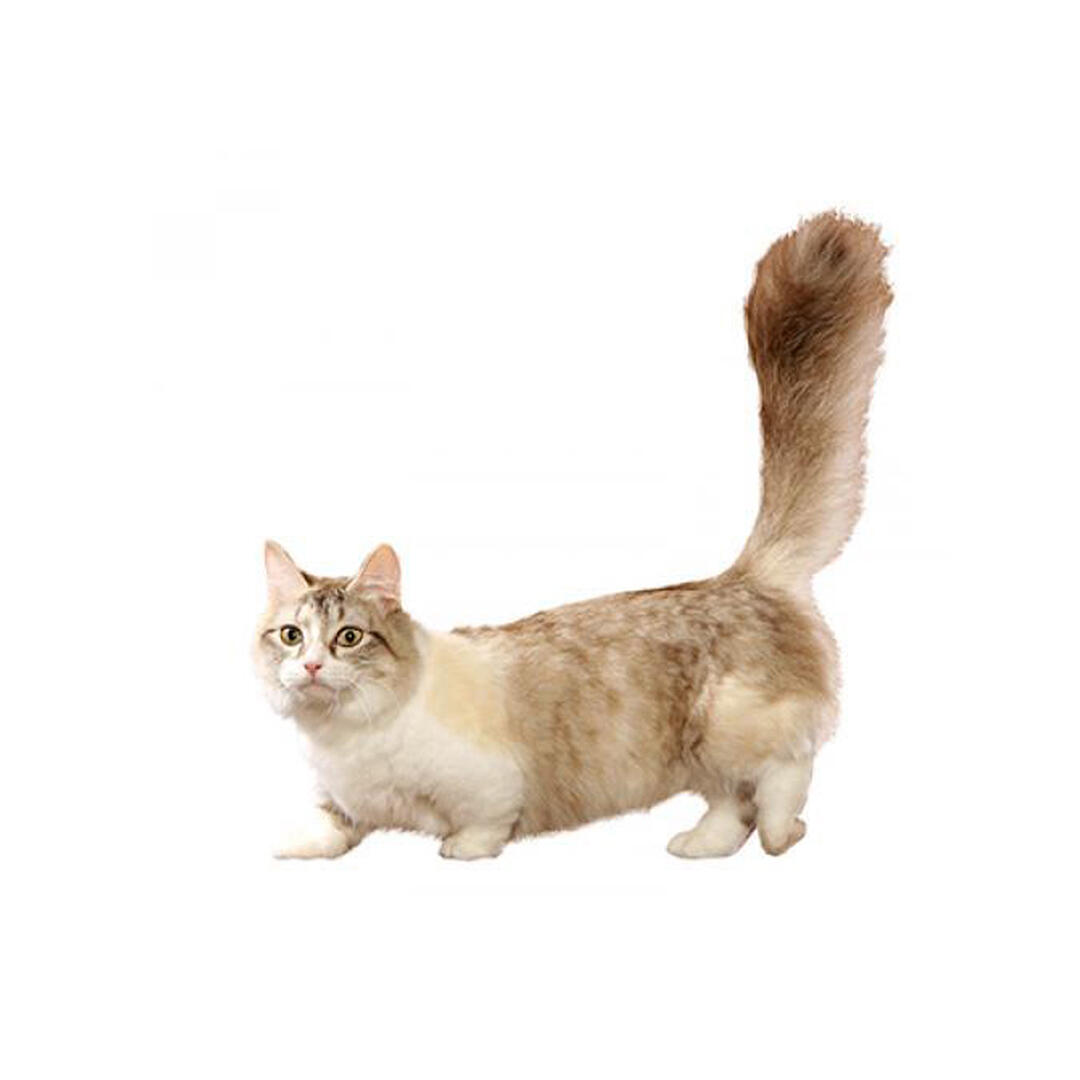
| Family-friendly: | 2/5 |
| Playfulness: | 4/5 |
| Intelligence: | 5/5 |
| Likes Other Pets: | 5/5 |
| Grooming needs: | 4/5 |
| Shedding: | 3/5 |
The short leggedness of the Munchkin breed is a deformity that means that they are prone to developing arthritis.
If your first thought on meeting a Munchkin is ‘cat-weasel’, you wouldn’t be far wrong. The Munchkin can find it hard to jump (although many can) and they move very differently to standard legged cats, with a much wrigglier, rolling motion.
Curious, intelligent, friendly and playful, the Munchkin is in other respects much like any domestic cat, possibly more inclined to enjoy handling and lap-time than some, but equally keen to exercise their feline hunting behaviour by chasing and hunting toys if given the opportunity.
| Family-friendly: | 2/5 |
| Playfulness: | 4/5 |
| Intelligence: | 5/5 |
| Likes Other Pets: | 5/5 |
| Grooming needs: | 4/5 |
| Shedding: | 3/5 |
Originating in the USA, the Munchkin mutation was first spotted in a litter of stray kittens in 1983. Although short legged cats have been noted a number of times since the 1940’s, this was the first time such kittens were kept and bred from to recreate the short-legged appearance.
Their existence as a pedigree cat is somewhat controversial with few cat registry associations recognising them at all. It is thought that the short-legged gene also results in health problems and opinions are divided as to whether these cats should be produced intentionally.
Strictly an indoor cat, the Munchkin may not believe it to be true but they are not equipped for life outdoors in the ‘wild’ as it were, and should be kept indoors or in a house with a secure cat-run attached.
Whilst some Munchkins can jump and climb, the relative length of leg to back means that back injuries are more of a risk than in a more traditionally built cat. Avoid your Munchkin jumping or being encouraged to take risky jumps by providing steps and ramps to vantage points rather than climbing trees. Munchkins do like to play hunting games with toys on strings and will enjoy food dispensing toys that recreate parts of the hunting sequence.
Every cat is unique and each has their own particular likes, dislikes, and needs when it comes to food. However, cats are carnivores and every cat must obtain 41 different and specific nutrients from their food. The proportion of these nutrients will vary depending on age, lifestyle and overall health, so it's not surprising that a growing, energetic kitten needs a different balance of nutrients in her diet than a less active senior cat. Other considerations to bear in mind are feeding the right quantity of food to maintain 'ideal body condition' in accordance with feeding guidelines and catering to individual preference regarding wet or dry cat food recipes. Find out more about cat feeding guidelines with our article.
The Munchkin may struggle to reach parts that other cats can reach when grooming, so a weekly or bi-weekly cat groom will help. Long coated Munchkins will need grooming every day. Remember that a greasy coat can be evidence that your cat is no longer attempting to groom themselves, which can be indicative of poor or failing health. As with all cats, Munchkin cats’ benefit from regular vaccination, parasite control and an annual veterinary health check.
The Munchkin is a specialist cat that requires owners who are home much of the time, a home with many elements designed around their inability to jump and their easily damaged backs, and a home without very young or boisterous children.